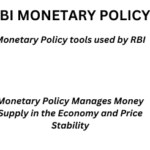The 2022 United Nations Ocean Conference: Basics Explained

The 2022 UN Ocean Conference, co-hosted by the Governments of Kenya and Portugal, took place on 27 June – 1 July 2022, in Lisbon, Portugal. The Conference concluded with world leaders adopting an action-oriented Political Declaration to save the ocean from existing and future threats, including marine pollution, harmful fishing practices, biodiversity loss, and acidification.
Through the Declaration, titled “Our Ocean, Our Future, Our Responsibility”, Heads of State and Government and high-level representatives participating in the Conference — which focused on Sustainable Development Goal 14 (life below water) — said that greater ambition is required at all levels to address the dire state of the ocean.
Also recognizing that developing countries — particularly small island developing States and least developed countries — face capacity challenges, they committed to strengthening scientific observation and data collection to inform decision-making and planning and providing them with finance, technology transfer, and capacity-building.
Drawing attention to marine pollution — another major issue of concern during the deliberations — they stressed the value of preventing and eliminating marine plastic litter, such as single-use plastics and microplastics, through resource efficiency and recycling, ensuring sustainable consumption and production patterns, and developing viable alternatives for consumer and industrial uses.
Further, the leaders cautioned against the adverse effects of climate change on the ocean and marine life, including the rise in ocean temperatures, ocean acidification, deoxygenation, sea-level rise, shifts in the abundance and distribution of marine species, as well as coastal erosion.
They emphasized the importance of implementing the 2015 Paris Agreement on climate change —including the goal to limit temperature rise to well below 2°C above pre-industrial levels and to pursue efforts to limit that increase to 1.5°C — as well as the Glasgow Climate Pact on mitigation, adaptation, and the provision and mobilization of finance, technology transfer, and capacity-building to developing countries, including small island developing States.
The leaders also called for an ambitious, balanced, practical, effective, robust and transformative post-2020 global biodiversity framework for adoption at the second part of the fifteenth Conference of the Parties to the Convention on Biological Diversity — to be held in Canada in December 2022.
LEARNING FROM HOME/WITHOUT CLASSES/BASICSThe United Nations Convention on the Law of the Sea (UNCLOS), also called the Law of the Sea Convention or the Law of the Sea treaty is the international agreement that resulted from the third United Nations Conference on the Law of the Sea (UNCLOS III), which took place between 1973 and 1982.
The Law of the Sea Convention defines the rights and responsibilities of nations with respect to their use of the world’s oceans, establishing guidelines for businesses, the environment, and the management of marine natural resources. The Convention, concluded in 1982, replaced four 1958 treaties. UNCLOS came into force in 1994; a year after Guyana became the 60th nation to ratify the treaty. The convention set the limit of various areas Territorial waters: Out to 12 nautical miles (22 kilometers; 14 miles); Contiguous zone: Beyond the 12-nautical-mile (22 km) limit, there is a further 12 nautical miles (22 km) from the territorial sea baseline limit, the contiguous zone, in which a state can continue to enforce laws in four specific areas: customs, taxation, immigration and pollution; Exclusive Economic Zones (EEZs): These extend 200 nautical miles (370 kilometres; 230 miles) from the baseline. Within this area, the coastal nation has sole exploitation rights over all natural resources. OCEAN ACIDIFICATION Because of human-driven increased levels of carbon dioxide in the atmosphere, there is more CO2 dissolving into the ocean. The ocean’s average pH is now around 8.1offsite link, which is basic (or alkaline), but as the ocean continues to absorb more CO2, the pH decreases and the ocean becomes more acidic. The ocean absorbs about 30% of the carbon dioxide (CO2) that is released in the atmosphere. As levels of atmospheric CO2 an increase from human activity such as burning fossil fuels (e.g., car emissions) and changing land use (e.g., deforestation), the amount of carbon dioxide absorbed by the ocean also increases.Biodiversity is a term used to describe the enormous variety of life on Earth. It can be used more specifically to refer to all of the species in one region or ecosystem. Biodiversity refers to every living thing, including plants, bacteria, animals, and humans.
Reducing emissions of and stabilizing the levels of heat-trapping greenhouse gases in the atmosphere (“mitigation”);
Adapting to the climate change already in the pipeline (“adaptation”).




0 Comments